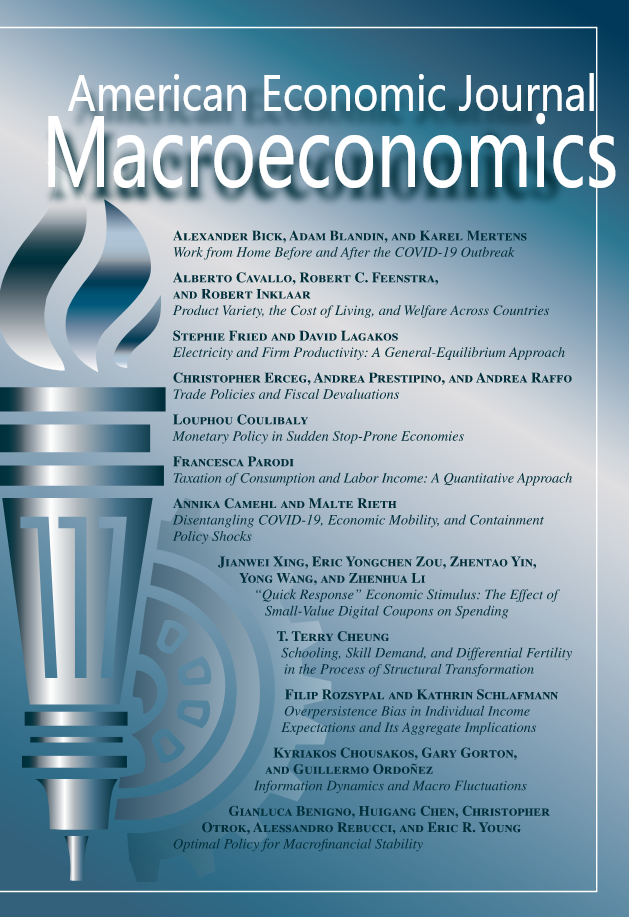贸易运动之谜
IF 5.7
1区 经济学
Q1 ECONOMICS
引用次数: 0
摘要
生产率冲击的标准国际传导机制预测了贸易和商业周期同步之间的弱内生联系:一个被称为贸易运动难题的问题。我们对这一难题进行了基础分析,指出了三种自然的候选解决方案:(i)金融市场摩擦,(ii)格林伍德-赫考维茨-霍夫曼偏好,以及(iii)短期低但长期高的动态贸易弹性。我们展示了这些候选决议的影响分析和定量评估他们。我们发现,虽然(i)和(ii)缺乏数据,但(iii)对解决这个难题大有帮助。(凝胶e32, f14, f44)本文章由计算机程序翻译,如有差异,请以英文原文为准。
The Trade-Comovement Puzzle
Standard international transmission mechanism of productivity shocks predicts a weak endogenous linkage between trade and business cycle synchronization: a problem known as the trade-comovement puzzle. We provide the foundational analysis of the puzzle, pointing to three natural candidate resolutions: (i) financial market frictions, (ii) Greenwood-Hercowitz-Huffman preferences, and (iii) dynamic trade elasticity that is low in the short run but high in the long run. We show the effects of each of these candidate resolutions analytically and evaluate them quantitatively. We find that while (i) and (ii) fall short of the data, (iii) goes a long way toward resolving the puzzle. (JEL E32, F14, F44)
求助全文
通过发布文献求助,成功后即可免费获取论文全文。
去求助
来源期刊

American Economic Journal-Macroeconomics
ECONOMICS-
CiteScore
8.20
自引率
1.70%
发文量
58
期刊介绍:
American Economic Journal: Macroeconomics focuses on studies of aggregate fluctuations and growth, and the role of policy in that context. Such studies often borrow from and interact with research in other fields, such as monetary theory, industrial organization, finance, labor economics, political economy, public finance, international economics, and development economics. To the extent that they make a contribution to macroeconomics, papers in these fields are also welcome.
 求助内容:
求助内容: 应助结果提醒方式:
应助结果提醒方式:


